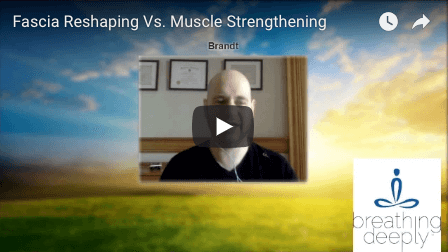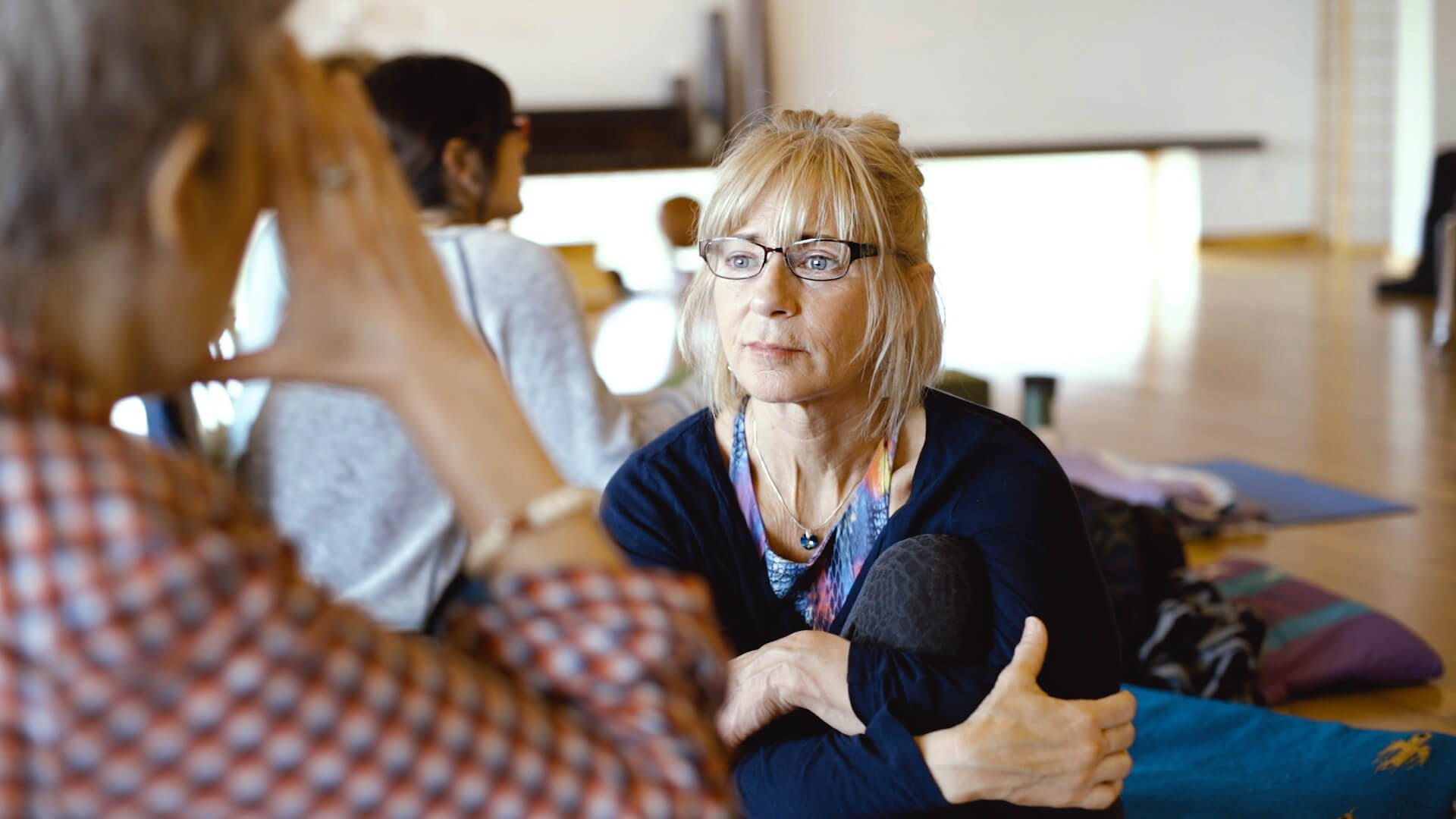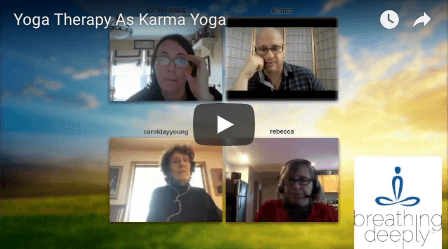In this segment of a Yoga Therapy Program Q&A session, Brandt Passalacqua, founder of Breathing Deeply Yoga Therapy, discusses why exercises that strengthen muscles and promote muscular balance should be prioritized over simply reshaping fascia.
Transcription:
Brandt Passalaqua: First full disclosure, I am a very advanced myofascial massage therapist so I have a very intimate relationship with fascia so I’m with you. Fascinating, incredibly important, you know what I mean, a really good way to think. You can correct fascial imbalances with passive things like you could drape somebody in a backbend over a yoga ball for 20 minutes, the fascia’s going to shift but in terms of teaching somebody how to change their structure so their fascia ends up in the right place, again you’ve got to bring it back to muscles. So the most important thing is that and then thinking fascially becomes sort of, I hesitate to say this but, it becomes secondary in terms of its practicality.
Student: Uh Huh
Brandt: I mean there are other ways to think about it I mean I know a lot of people do you know have taken stuff with Tom Meyers who’s like you know the king of fascia right.
Student: uh huh, uh huh
Brandt: He invented the concept of the you know the book, he wrote the book with the lines in them. And so anytime you’re doing yoga, I mean yoga’s Asana is a very fascial experience right if you just like hold poses because it sort of gets you in touch with you know the pull across your chest and triangle maybe or whatever right and that’s all fascia but the fascia, my push back against that is that the fascia, if you look at a cadaver which I’ve done I don’t know have you ever done cadaver viewing ever
Student: No
Brandt: If you cut somebody open and really look at the fascia and stare at it for a while, what you see is like these swaths of white you know or yellow usually in a cadaver fascia and then they’re wrapped in the muscle so there’s not really a good distinction so what the,
Student: Alright
Brandt: I don’t know I’m just going to put you in this camp for a moment since you started by saying I only hear about fascia so with the
Student: [laughing]
Brandt: [laughing] so with the fascia loving people you know obsessed people are like it’s all fascia, and they’re right because it’s all connected right.
Student: Right
Brandt: But there’s another part of that which is like look you’re saying that but really muscles do something a little bit different. They’re totally connected but the muscles are the only thing that we can actually fire right so in terms of like action steps to get rid of pain, muscles are almost always required.
Student: Okay, okay
Brandt: So you have to have a really good sense of how to tell somebody to strengthen and stretch muscles right and then
Student: Yep
Brandt: in addition to that what we talk about is how the fascia sort of shapes you but I feel like I guess what’s happened, I use to actually be you know because I’m a myofascial guy, right like that’s like I do hands on fascial work on people you know and I’m really into it [laughs] but what you learn if you do that a long time is that you can reshape and change pain syndromes but until somebody resets their muscle structure so that they hold that, they’re going to be your client forever, you see what I mean
Student: Okay, yep I see what you mean
Brandt: So hence my obsession with strength
Student: Um hum, okay okay
Brandt: But you’re not really talking about different things is my point of the wrap right. You got red muscle with white fascia swirling through it.
Student: Right
Brandt: So how different is it really. Look, we’re in this course to think about being like general yoga therapy practitioners. So to be balanced, that’s why I do talk about fascia because it’s super important but if you went on the fascial thinking all the way, what we, what you do is you’d have people on props for long periods of time reshaping themselves right.
Student: Right
Brandt: Like that would be one of the conclusions you could come to and the disservice you would be doing that person, I mean there would be a great service where you’re reshaping their fascia right, and I you know like every yoga asana doing person I do lots of fascial reshaping, restorative kind of things right
Student: uh huh
Brandt: But the disservice you would be doing the person is not teaching them how to keep that fascia where it needs to be right, like in a, while they’re walking around the world.
Student: Okay and that’s strength right that we’re saying, that that’s where the…
Brandt: Ya well that’s yah that’s muscle balance. It’s muscular balance
Student: Okay
Brandt: Which is the same thing because then the fascia goes where it needs to be in other words, if
Student: Ah
Brandt: the muscles in the back, in your upper back are weak and you’re like this all the time, your fascia is now in this shape
Student: Oh, Ok
Brandt: and we could say, one approach would say we’re going to reshape the fascia by doing this, and another thing to say would be like we’re going to stretch these muscle, it’s the same thing and then another way to think about it is we’re going to do a lot of cobras to strengthen your muscles so that you’re like this muscularly and the fascia will follow.
Ready for a challenge? Apply to become a yoga therapist. A new class is starting soon.






